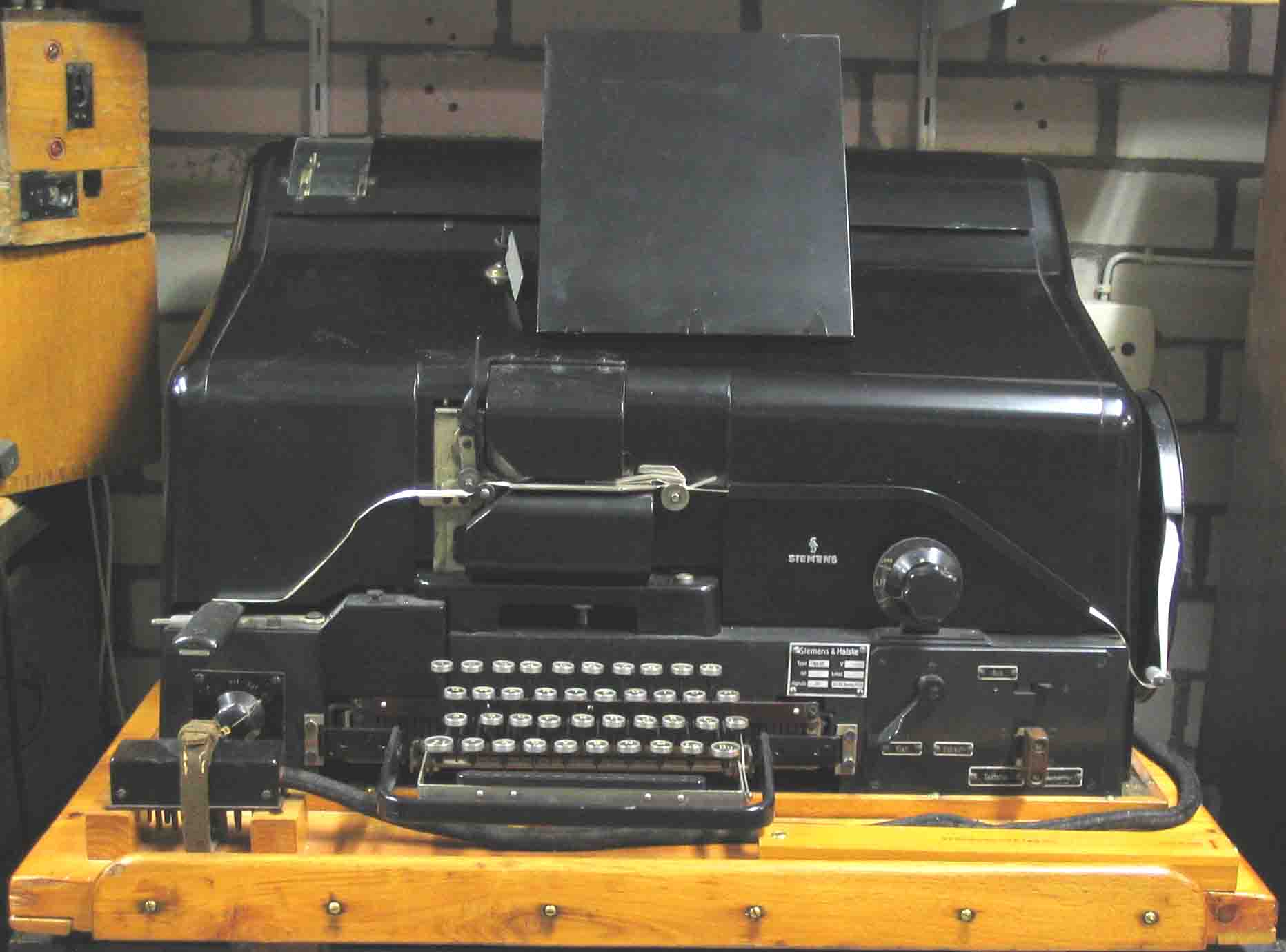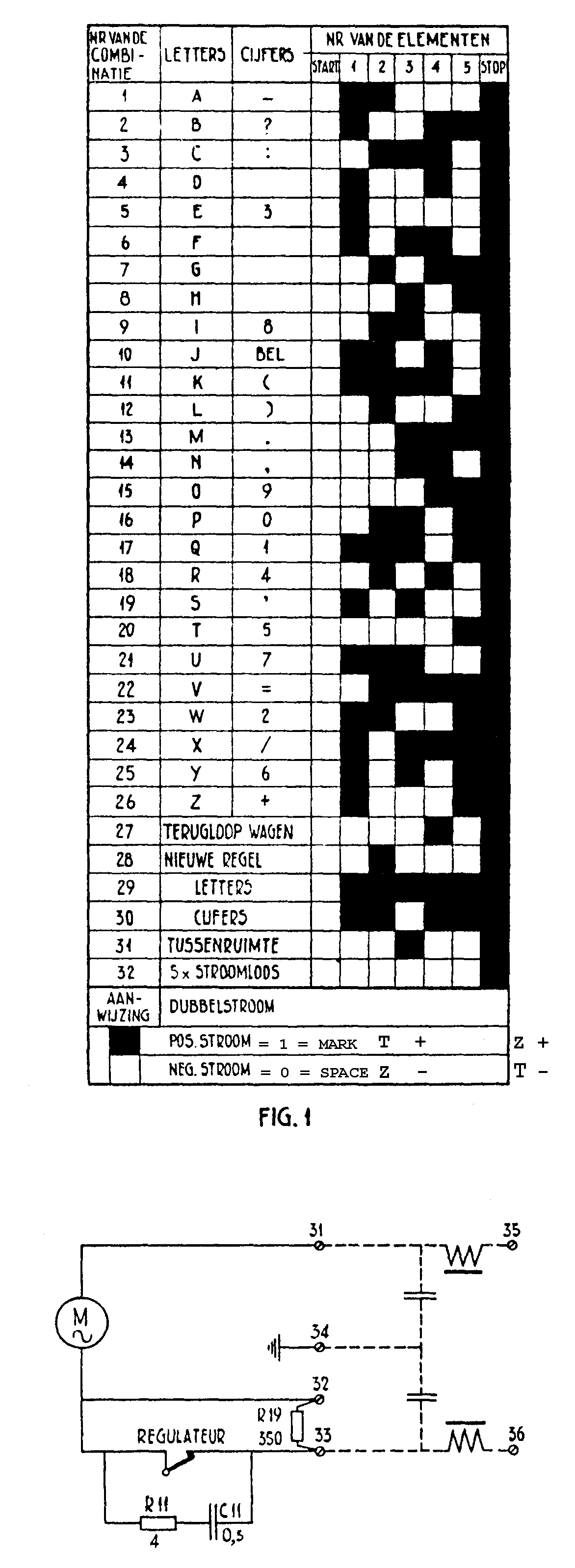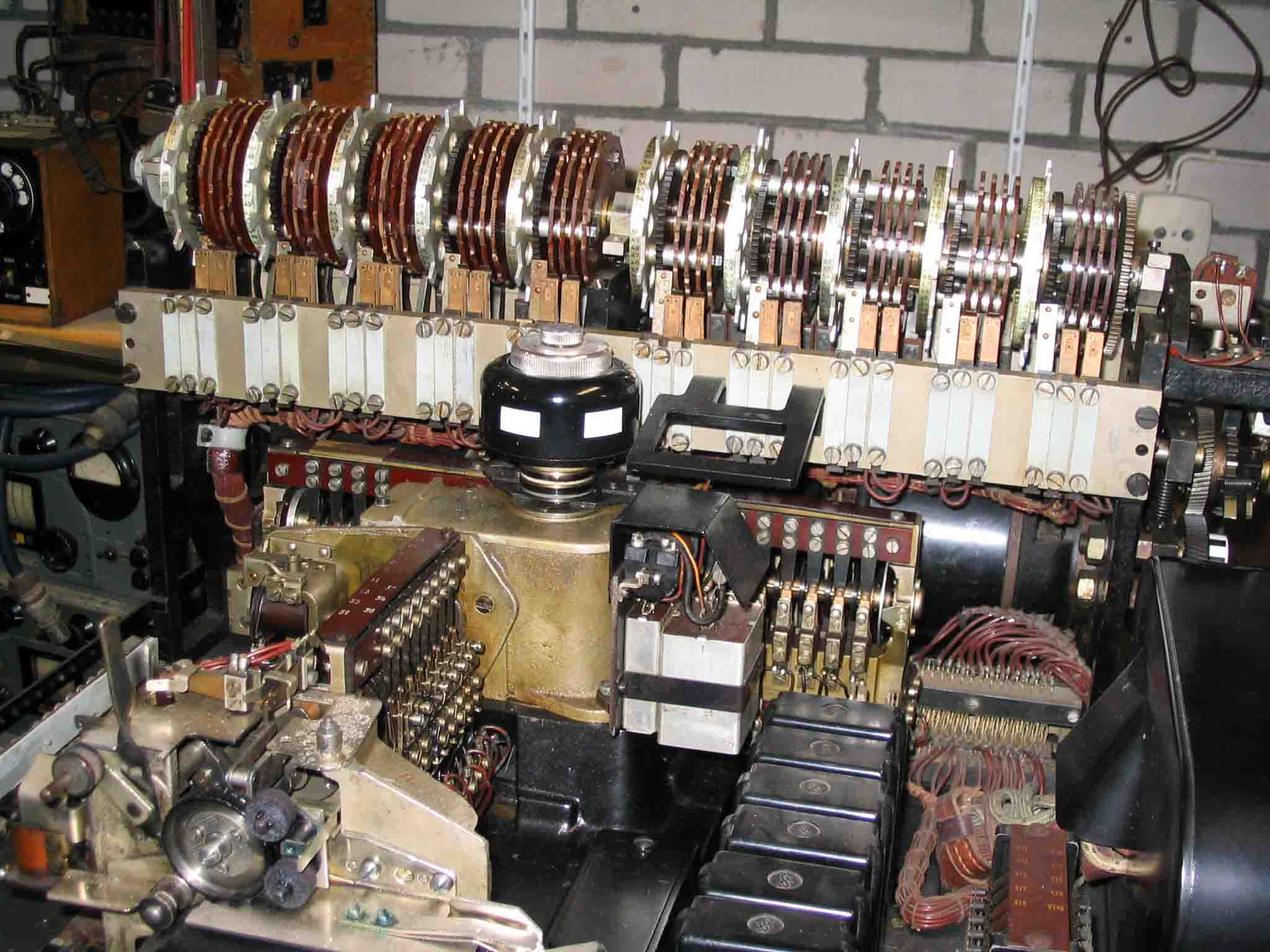
Siemens & Halske G-Schreiber type T52d
Telex machine (SFM T52d)
I would like to show some photographs which I recently took, during maintenance work on the rotor section of our T 52d machine.

Siemens & Halske telex (SFM) type T52d on display (archive displays)
To start with we must regard, that html line-drawings on internet are subject to rather poor image quality. I have, therefore, converted the principle schematics to pdf.
Principle schematic diagram of the Siemens T52d telex machine
To understand the nature of Baudot-coded telex signals, we take a brief look at the (true)table, which was used by many PTT services in the world (up to the 1980s).

This table originates from a Dutch PTT manual. The black fields represent 'mark' (positive signal) or + 60 volts, the white ones does carry 0 volt ('space') or, when double current is concerned which Siemens machines mostly used, - 60 volts. Consequently, this system runs on: + 60 V and -60 V (120 V with a centre-tap known as MB, = Dubbelstroom). Tussenruimte means: free space; terugloop wagen, means: carriage return (next line feed); nieuwe regel, means: new line; position 29/30 is to shift between typefont and numeral font & special symbols; vak van de elementen, means: signal bits (regularly a 5 bit serial data signal); the rest is self explaining. *We have to notice, when confidential messages are being concerned, that only tape (writing) machines can be operated. Every transmitted symbol is being coded, consequently, also the 'carriage return' signal. Sheet printers would, most likely, jam after one single text line has been printed; due to the lack of an appropriate 'carriage return' signal. - If this might occur, provision has to be taken as to prevent this happening. When a mix of tape and sheet printing telex machines are engaged, one have to ensure that at least after every 80 characters, a forced (obligatory) 'carriage return' is being transferred (provided).

The rotor-unit being removed. Photo taken from the right-hand side of the artefact

The rotor-spindle(shaft) being lifted a bit, from its frame

The rotor-spindle in position again
I have, for this occasion, copied some schematics of the wartime T52d manual (1943/44) (pdf). Please notice also: the main principle diagram of T52d. The coding wheels (rotor disks = Walzen, as the Germans call them) must be identical to the ones employed in a T52e (successor apparatus 1944), as both types can inter-communicate. Type T52e is fit with a special switch, as to provide (ensure) T52d/e compatibility (downwards compatible).
Anlage 1, Verschlüsselungsschaltung zur M.Dv.Nr. 35 IV, D.(Luft) T. g.Kdos 9105d
Anlage 2, Entschlüsselungsschaltung zur M.Dv.Nr. 35 IV, D.(Luft) T. g.Kdos 9105d
T52d Würfel- Entwürfel-Schaltung
T52d Würfelvorgang (principle coding - decoding circuit)
KTF - Haltemagnet-Stromlaufplan 1
KTF - Haltemagnet-Stromlaufplan 2
For patents related to these kinds of telex apparatus, please consider: German patent dBase. Regard especially DE615016, which was also granted in the US. These patents originate from 1928 - 1930. When browsing in our patent dBase, one can enter, for instance: Geheimschreiber, you will encounter 11 hits.
Back to: Handbooks papers and product information